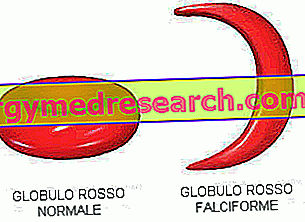Percutaneous transluminal angioplasty, or more simply angioplasty, is a minimally invasive technique capable of eliminating, or at least reducing, narrowing of the vessel caliber.
Indications
When the internal lumen of an artery is reduced, generally due to an atherosclerotic plaque, a thrombus or an inflammatory process, it is called stenosis. Because of this pathological shrinkage, the normal passage of blood and the substances it carries are hindered, or in the worst of hypotheses prevented.
In all these cases angioplasty is proposed as a safe and effective alternative to surgical therapy, because it is performed in local anesthesia (the patient is therefore awake and conscious) and without the need to resort to thoracotomy.

How it is performed
Angioplasty consists of the selective inculturation of a guiding catheter upstream of the obstructed artery (which is often found at the level of the coronary arteries - coronary artery disease - or lower limbs - claudication -); generally the arterial access site is represented by the common femoral artery. The introduction along the guide wire of a balloon catheter follows.
Once the stenosis is reached, a pressure-controlled swelling of the balloon is performed, which restores the patency of the obstructed vessel to a greater or lesser extent, crushing the plate towards the vessel walls, thus making it wider and reducing its shrinkage. The diameter of the balloon is chosen so that it reflects the caliber of the lumen of the artery upstream of the stricture, while its length is slightly greater than that of the narrowing. Endoscopic vision and radiographic control using a radiopaque dye, allow the correct choice and correct positioning of the balloon. At the end of the angioplasty it is important to proceed with haemostasis of the access artery, to prevent the high blood pressure from producing a hemorrhage. During the examination, the patient may experience an episode of chest pain when the balloon is inflated, temporarily blocking blood flow in the artery.
Risks and Complications
The technique just described, also known as simple angioplasty, presents some risks, many of which are limited by administering, before and after the intervention, medicines such as aspirin and calcium hepar to prevent thrombotic phenomena. It is therefore important that the patient scrupulously follows medical recommendations.
There is also a real risk that angioplasty causes damage to the vessel wall (dissection) or triggers acute or subacute obstructive mechanisms of the vessel. Also common is a vasal re-stenosis in the months following the dilation.
Application of Stent
Many of these limits are overcome by the introduction of so-called stents, small metal prostheses, similar to a net, which remain fixed to the vascular wall preventing a new narrowing.
Adhesion to the vascular wall can be spontaneous (self-expanding stents) or favored by the pressure exerted by the balloon
The maintenance of the patency obtained can be favored by specific drugs applied on the surface of the stent (in these cases one speaks of a medicated stent) and released gradually.

A further technique consists in removing the atherosclerotic material from the plate by means of a sliding cutting edge inserted in a cylindrical fenestrated container, which is made to adhere to the atheroma - by inflating the balloon - and advanced by an internal motor. This technique, called directional atherectomy is similar to the simpler rotational atherectomy, in which the task of removing the atherosclerotic material is entrusted to a small cutter which, when pushed to a particularly high number of revolutions by a turbine, pulverizes the plate. The fragments that form are so small that they cannot cause embolization of clinical significance. More recently, techniques have been developed in which the removal of the atherosclerotic plaque is entrusted to a laser beam.
When to undergo angioplasty
The main field of application of angioplasty remains the treatment of coronary heart disease, to the point that today coronary angioplasty is considered a routine method; this technique contributes in many cases to improving the typical symptoms of coronary ischemia, such as chest pain (angina pectoris) and shortness of breath (dyspnea). Coronary angioplasty can also be used immediately after a heart attack, to reduce the extent of the necrotic area and revascularize the still vital myocardial areas.
Unfortunately, not all patients can undergo various angioplasty techniques. The choice of the most suitable procedure or the possible use of the classic by-pass surgery, obviously belongs to the medical staff on the basis of the various elements collected during the preparation examinations for the intervention. In general, angioplasty is not recommended if small diameter vessels are occluded or in the presence of severe and diffuse atherosclerosis.



